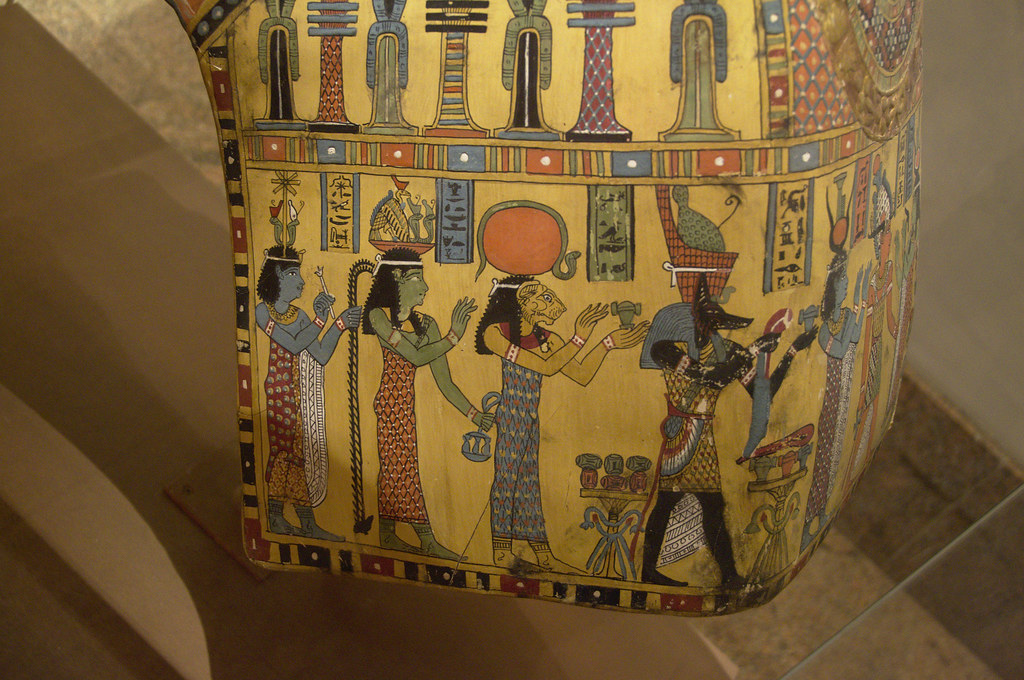#mummy!roman
Text

Mummy portrait (wax encaustic on sycamore wood) of a girl, from the Fayum region of Egypt. Artist unknown; ca. 120-150 CE (reign of Hadrian or Antoninus Pius). Now in the Liebieghaus, Frankfurt am Main, Germany. Photo credit: Carole Raddato.
#history#ancient history#Ancient Egypt#Roman Empire#Roman Egypt#art#art history#ancient art#Roman art#Egyptian art#Romano-Egyptian art#mummy portrait#encaustic painting#Liebieghaus
3K notes
·
View notes
Text

~ Mummified Dog.
Culture: Egyptian
Period: Roman Period
Date: ca. 30 B.C.–A.D. 395
Medium: Linen, pigment, and organic remains.
#ancient#ancient art#history#museum#archeology#ancient egypt#ancient history#archaeology#egyptology#Egyptian#egypt#mummy#mummified#mummified dog#Roman#roman period#dog#ca. 30 b.c.#ca. A.D. 395
797 notes
·
View notes
Text

decided that my chronurgy wizard for a curse of strahd game was just going to be Evelyn from the Mummy but make her wear a sunhat in Barovia instead
#evelyn carnahan#the mummy 1999#dnd#penelope 'penny' blackwell#roman does art#anyway this is just an excuse for me to draw rachel weisz
598 notes
·
View notes
Text
2,000-Year-Old Fayum Portraits from Roman Egypt: also known as "mummy portraits," these funerary paintings were often fastened to the coffins of the people they depicted
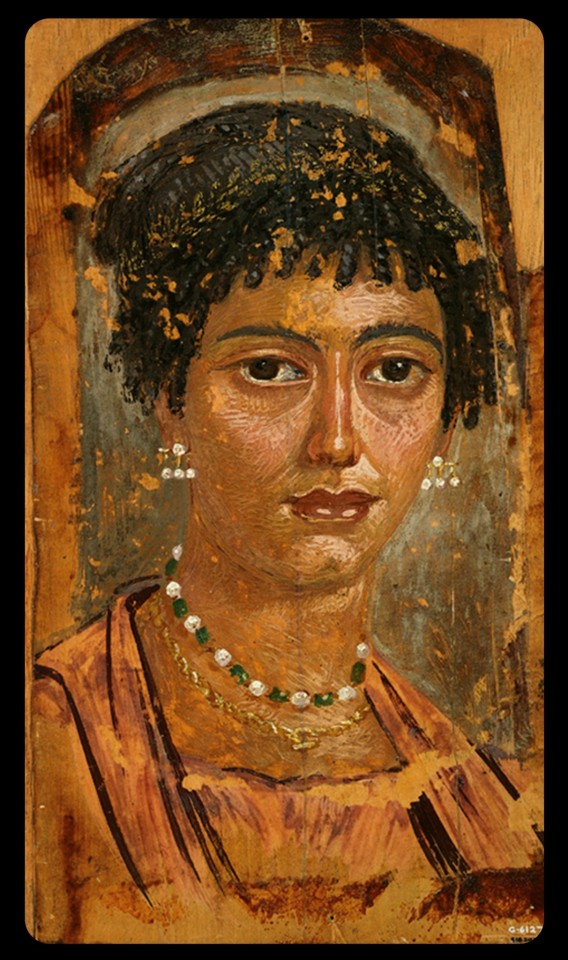
Above: Fayum portrait of a woman from Roman-occupied Egypt, c.100-110 CE
Fayum portraiture was a popular funerary practice among the upper-class families of Roman Egypt from about 50 CE to 250 CE. Given the high mortality rates for children during this period, many of these portraits depict children and youths, but adults were often featured, too.
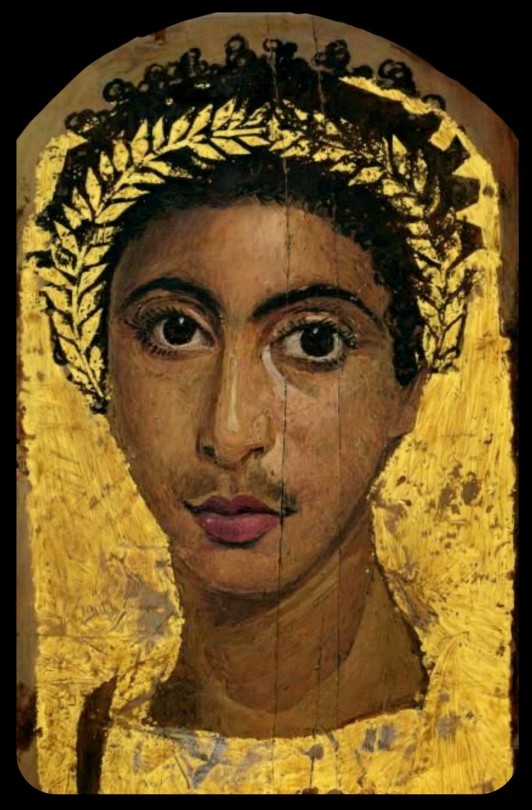
Above: portrait of a youth wearing a golden wreath, c.130-150 CE; the wreath and the background of the portrait are both gilded
The population of the Faiyum Delta, where most of these portraits were found, largely contained individuals with both native Egyptian/North African and Greek heritage. The Greek lineages can be traced back to the Ptolemaic period, when the Greeks gained control of Egypt and began to establish settlements throughout the region, gradually leading to a cultural diffusion between the Greek and Egyptian populations. The Romans eventually took control of Egypt in 31 CE, absorbing it into the Roman Empire and colonizing much of North Africa, but the demographics of the Faiyum Delta remained largely unchanged.

Above: portrait of a man with a mole on his nose, c.130-150 CE
Many of these Fayum portraits reflect the same blend of ethnic and cultural roots, depicting individuals with both Greek and native Egyptian heritage (a claim that is supported by both archaeological and genetic evidence). Some portraits may also depict native Egyptians who did not have any European ancestry, but had been integrated into Greco-Roman society.

Above: portrait of a bearded man, c.170-180 CE
These representations of native Egyptians provide us with unique insights into the actual demographics of Roman-occupied Egypt (and the ancient world at large). Non-European peoples are rarely included in depictions of the classical world; it's also interesting to see the blend of cultural elements that these portraits represent.

Above: portrait of a priest of Serapis, c.140-160 CE; the man in this portrait is shown wearing a fillet/crown that bears the seven-pointed star of the Greco-Egyptian god, Serapis
As this article explains:
In the 1800s and early 1900s, Western art historians didn’t know what to make of these portraits. Scholars of Roman history labeled them Egyptian. Scholars of Egyptian history labeled them Greco-Roman. These binary academic classifications failed to capture the true complexity of the ancient (or, indeed, modern) Mediterranean. In reality, Fayum portraits are a syncretic form, merging Egyptian and Greco-Roman art and funerary practices. They reflect the cosmopolitanism of both Roman and Egyptian history.
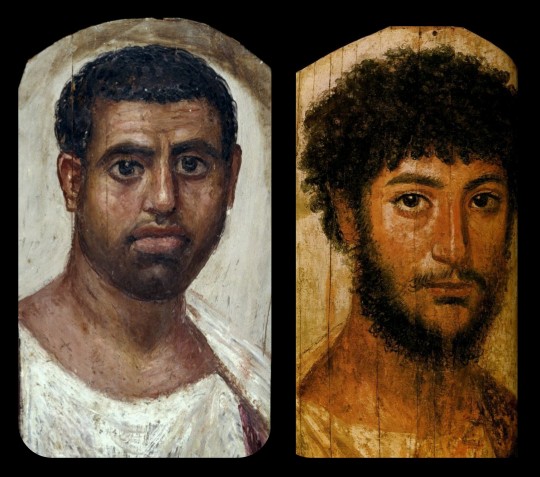
Above: portrait of a man, c.80-100 CE (left); portrait of a bearded officer, sometimes referred to as "Perseus," c.130-175 CE (right)
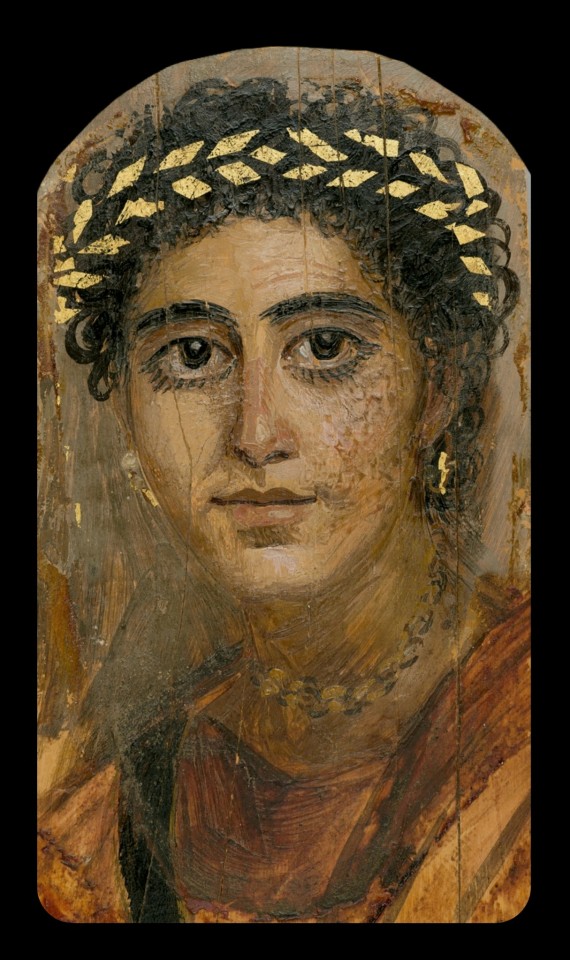
Above: portrait of a young woman in red, c.90-120 CE
Nearly 1,000 of these portraits are currently known to exist.
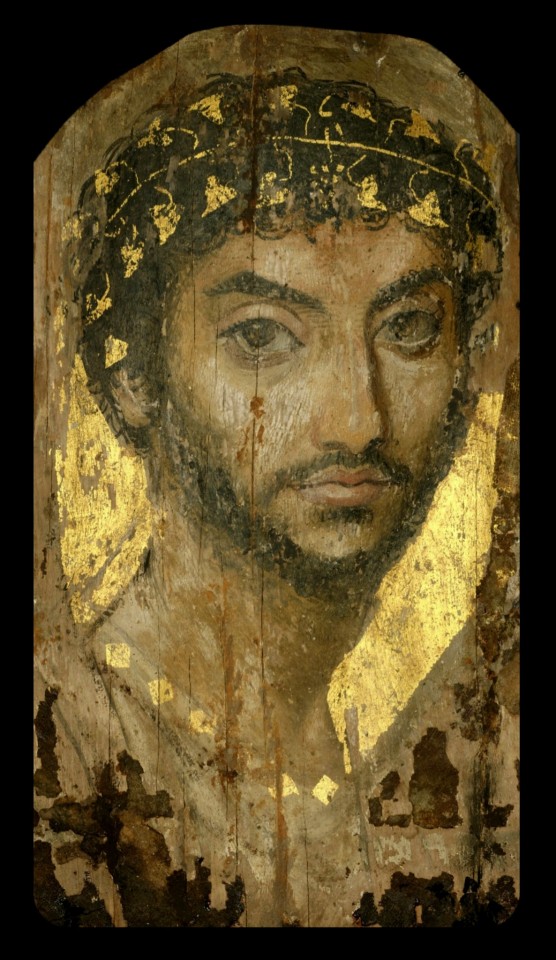
Above: portrait of a man wearing a gilded ivy wreath, c.100-150 CE
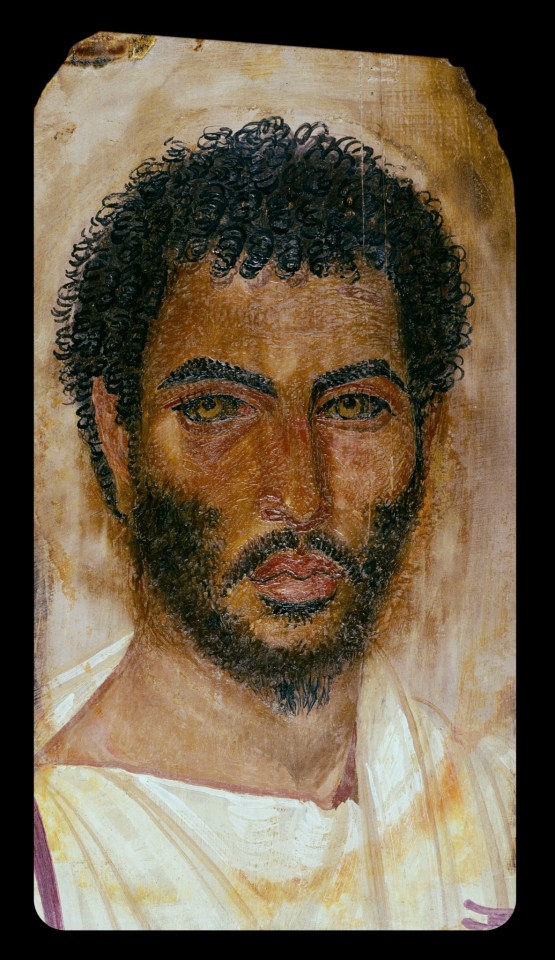
Above: portrait of a bearded man, c.150-170 CE
Sources & More Info:
Curationist: Fayum Portraits
Harvard Art Museums: Giving the Dead their Due: an Exhibition Re-Examines Funerary Portraits from Roman Egypt
Getty Museum: APPEAR Project
Getty Museum: Faces of Roman Egypt
National Geographic: Ancient Egypt's Stunning, Lifelike Mummy Portraits
The Athens Centre: The Myth of Whiteness in Classical Sculpture
Forbes: Whitewashing Ancient Statues: Whiteness, Racism and Color in the Ancient World
#archaeology#artifact#anthropology#history#ancient history#art#fayum portraits#roman egypt#ancient rome#ethnography#painting#portrait#north africa#people of color#egypt#religion#greco roman#greek#classical antiquity#fayum#mummy portraits#romano egyptian#representation
223 notes
·
View notes
Text








Artist Spotlight: Roman Novikov
#roman novokov art#frankenstein's monster#the wolf man#freddy krueger#pinhead#hellraiser#critters#jason voorhees#friday the 13th#dracula#kharis the mummy#oogie boogie#a nightmare before christmas#ghostface#scream#xenomorph}#alien#stitch#leon the progfessional#harley quinn#venom
118 notes
·
View notes
Text
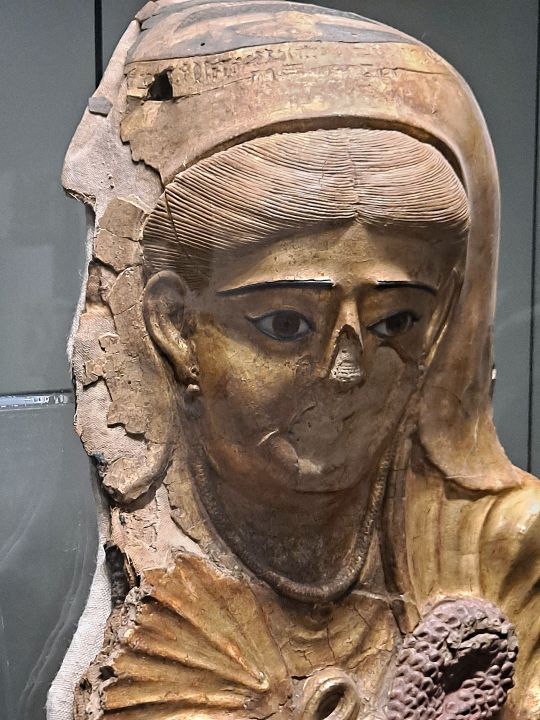
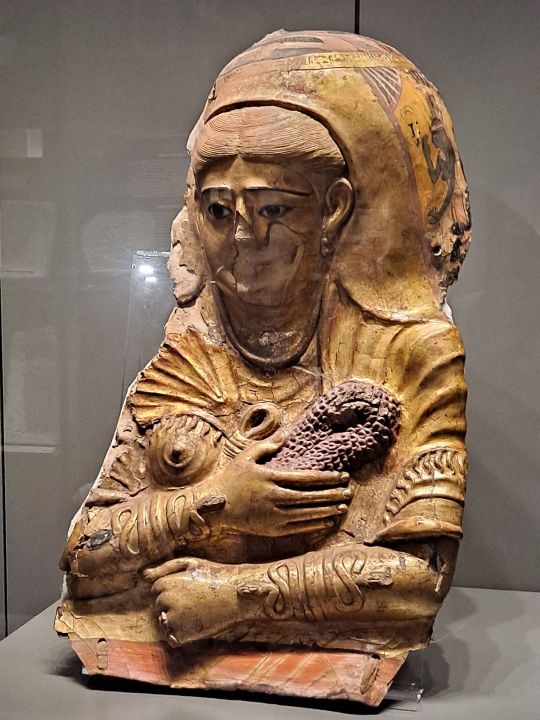
Mask of a female mummy
Fayum
2nd century CE
Egyptian Museum, Turin
Turin, June 2023
#Roman Egypt#2nd century CE#eye#mummy mask#ancient#art#Roman#Turin Egyptian museum#my photo#hairstyle
489 notes
·
View notes
Text

Funerary portrait of Aline
From wikipedia "Mummy portrait of Lady Aline, from Hawara, Egypt, painted directly onto the canvas of the mummy wrapping. The Tomb of Aline is an ancient Egyptian grave from the time of Tiberius or Hadrian, excavated at Hawara in 1892, Neues Museum, Berlin"
Neues Museum, Berlin
Feb. 2023
#ancient rome#ancient egypt#mummy#portrait#ancient art#original photography#photography#taphophile#taphophilia#lensblr#photographers on tumblr#ancient roman#ancient history#archaeology#art#egyptian art#egypt#egyptian#wanderingjana
83 notes
·
View notes
Text
Time Travel Question 35: Ancient History XVI and Earlier
These Questions are the result of suggestions from the previous iteration.
This category may include suggestions made too late to fall into the correct earlier time grouping. Basically, I'd already moved on to human history, but I'd periodically get a pre-homin suggestion, hence the occasional random item waaay out of it's time period, rather than reopen the category.
In some cases a culture lasted a really long time and I grouped them by whether it was likely the later or earlier grouping made the most sense with the information I had. (Invention ofs tend to fall in an earlier grouping if it's still open. Ones that imply height of or just before something tend to get grouped later, but not always. Sometimes I'll split two different things from the same culture into different polls because they involve separate research goals or the like).
Please add new suggestions below if you have them for future consideration. All cultures and time periods welcome.
#Time Travel#Cybele#Ancient World#Trans History#Vesuvius#Pompeii#Roman Empire#Bog Mummies#Fashion History#Tyrian Purple#Bronze Age#Iron Age#Indigenous History#Egyptian Blue#Mediterranean#Mediterranean Sea#African History#Western Asian History#European History#Queer History#Epidaurus
246 notes
·
View notes
Text




Egyptian Stucco Mummy Mask of a Woman
Roman Period, circa 2nd Century A.D.
#Egyptian Stucco Mummy Mask of a Woman#roman period#circa 2nd Century A.D.#ancient artifacts#archeology#archeolgst#history#history news#ancient history#ancient culture#ancient civilizations#ancient egypt#egyptian history#egyptian art#ancient art#art history
34 notes
·
View notes
Text

I wonder what Tiberius would have thought of the fact that even after 2000 years the British Museum has his mother right next to him (and in fact slightly to the front), and not with Augustus.
#tiberius#emperor tiberius#livia#livia drusilla#ancient rome#bust#roman empire#never getting rid of mummy
33 notes
·
View notes
Text
Beautiful shot of the mummy mask of an unnamed lady. Colourful gods parade across the yellow mask, bringing offerings: on this, the left side, we have Seshat, Hathor (wearing an elaborate headdress with a vulture wearing the red crown), Tefnut, and Anubis wearing the double crown.
(This is the same as this.)
When: Roman Egypt
Where: Metropolitan Museum of Art, New York
#Ancient Egypt#mummy mask#Seshat#Hathor#Tefnut#Anubis#Roman Egypt#Metropolitan Museum of Art New York
71 notes
·
View notes
Text

Ancient Egyptian mummy portrait (encaustic on wood) of a boy identified by an inscription as Eutyches. Artist unknown; 2nd cent. CE (Roman period). Now in the Metropolitan Museum of Art.
#classics#tagamemnon#art#art history#ancient art#Egypt#Ancient Egypt#Egyptian art#Ancient Egyptian art#Greco-Egyptian#Greco-Egyptian art#Roman Egypt#Roman Empire#portrait#portrait painting#mummy portrait#children in art#Metropolitan Museum of Art#encaustic#encaustic on wood
555 notes
·
View notes
Text












kendall loganification experts what do you have to say about all this
#can't get over it i feel like they've given me such a vivid insight into what the Divorce Years might've been like.#squint a little and this is literally roman running to stay with mummy for a few days cause dad hit him again#succession spoilers#caps#kendall roy#caroline collingwood#roman roy
229 notes
·
View notes
Text

Mummy portrait of a woman, 130-140, Roman Egypt.
48 notes
·
View notes
Text
If you like Pirates of the Caribbean or the Brendan Fraiser mummy movies, this poll is for you
#my polls#poll#polls#the mummy#pirates of the caribbean#potc#cowboys and aliens#pride and prejudice and zombies#Wonder Woman#wild west#wwII#wwi#roaring 20s#cold war#age of discovery#napoleonic wars#civil war#victorian era#feudal japan#golden age of piracy#roman empire
22 notes
·
View notes
Text

Mummy of an adult man
Roman Period, ca. 30 BC-395 CE.
British Museum. EA6704
Read more
110 notes
·
View notes
